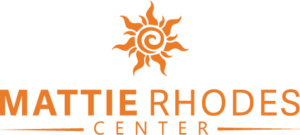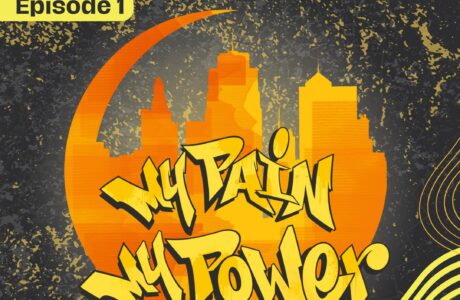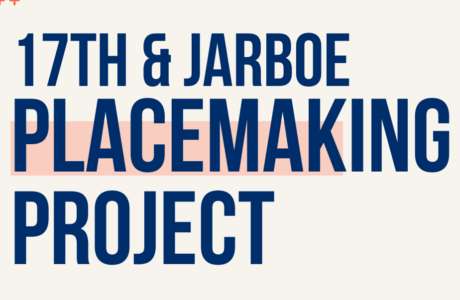The Rocha Brothers: A Proud Legacy of Chicanos in the Heartland
Common themes or threads connect all of us. Just like other communities of color, Chicano/x and Latinx people often find that family, culture, and faith influence many aspects of life. Alongside these shared cultural touchpoints, art is also an integral connection to their Chicano roots for the Rocha family.
Originally from Topeka, the Rochas arrived in the area in the early 20th century when many Mexicans migrated to the area due to “the political turmoil and economic upheaval caused by the Mexican Revolution. Most immigrants came from the agricultural states of Guanajuato, Jalisco, and Michoacán.”[1]
According to historian Valerie Mendoza, “the policies of overthrown dictator Porfirio Diaz left many rural dwellers from this region were landless and unable to make a living.”[2] At the same time, the United States offered some opportunities for Mexican immigrants as the country faced a critical labor shortage due to the pressures of World War I. The labor pool to run the region’s largest industries—railroads and meatpacking—greatly diminished as men joined the armed services and the global conflict halted immigration from Europe.[3] In response to immigration restrictions, railroad agents for the Atchison, Topeka, and Santa Fe Railway Company saw Mexican workers as attractive replacements for the job. Soon, the company became the largest employer of Mexicans in the region.[4]
It is within this context that the Rochas set down roots in the Oakland area of Topeka, a historically Mexican American neighborhood on the Eastside of Topeka. Oakland is a vibrant community that has deep Mexican American roots. As mentioned, many Mexican immigrants landed in Topeka, particularly Oakland, due to its’ proximity to the railroads. In the isolated terrain of the heartland, the creation of community through such institutions as the Catholic Church or their place of work, produced solidarity among newer immigrants who sought to compensate for their lack of inclusion in mainstream white society.[5] Soon after their arrival in the area, the community worked together to build and establish a Catholic Church they would call Our Lady of Guadalupe. The church would soon become a beacon for many at the heart of Oakland.
Beginning in 1933, the community started the Mexican Fiesta to raise funds for the church and later, Our Lady of Guadalupe School. The Fiesta is a yearly festival that includes music, food, carnival rides, and even a Fiesta Queen and King. The Rocha family has been members of Our Lady of Guadalupe since the1940s.
Like other Chicanos, shared cultural values such as family, community, and faith shaped their American experience. Community building was particularly imperative in the Midwest since it is more isolated than other regions on the coast or in the Southwest, which historically have larger populations of Latinos. Additionally, the Rocha family shared a unique gift: the ability to connect experiences and people through the arts. The family matriarch, Beatrice dedicated her life to her children—ten in total, reinforcing the foundation of a strong family unit. Rudolph, the family patriarch, was a jazz musician who wrote charts for jazz orchestras. Undoubtedly, creativity flourished in the Rocha household.
Pat and Joey Rocha recall their parents’ influence on their lives and the development of their talents. Pat’s dedication to his craft led him to Kansas City, where he became a freelance illustrator and courtroom artist for Channel 4. After selling a couple of paintings at the Haller gallery, he participated in group shows in Philadelphia and Tribeca, New York. These shows eventually led to solo exhibits in New York, Philadelphia, Miami, and Los Angeles. Since childhood, drawing and painting have been fundamental to his life. According to Pat, art constantly reflects his past experiences.
“My interest in human nature and the drama of living compels me what to paint. If the mood or moment is strong enough, then people can draw their own conclusions. Sometimes real, sometimes imaginary. Sometimes when I’m looking at an old photograph, I’ll stare at the person in the photo and imagine myself in the same room. It’s impossible for me to paint a portrait without having a story to tell behind it. I simply couldn’t pass the time away drawing people or places without meaning. When the story hits me after the initial drawing, I’ll look for additional pictures to accommodate the central theme. Then it begins to take on a life of its own. There is a reason for everything in my paintings. Gradually, I understand why I spend so much time alone with one painting. I never stop thinking as long as I keep painting; it’s simply survival of the mind.”[1]
Pat’s brother Joey, a dental technician by trade and also an artist by passion, found his inspiration in the music and people of his childhood. His art often has a religious theme, which reflects on his Catholic upbringing. Joey’s craft has also supported his career in Dental Technology. He uses his talents to form, color, and shape each customized piece in various Topeka & Kansas City labs. Joey also shows his artwork every year at the Marlo Cuevas-Balandran Activity Center in the basement of Our Lady of Guadalupe Church. He believes that art, in any form, is a gift of self-expression. He says that he wants to share his God-given talent with others.
The art scene in Kansas City has dramatically influenced both Rocha brothers’ work. Since Pat began his professional career as an artist in Kansas City, he’s traveled nationally to share his pieces. While Joey’s work has kept him close to his roots in Topeka, he has also shown his work here at the Mattie Rhodes Cultural Center over the years during various exhibitions, including our Chicano Style show this summer. With their unique perspectives and dedication, both brothers have significantly contributed to the Chicanx art scene, enriching the cultural landscape of the region.
Their connection and support of emerging and experienced artists mirrors the mission of Mattie Rhodes. The walls at the Cultural Center not only showcase artists’ talents, but also fosters a sense of belonging. Like the Rocha brothers, Mattie Rhodes finds its strength in the community. Visitors of Mattie Rhodes see and hear the pride of Chicano/x culture, which is open for all to enjoy and process its connection to the city and themselves.


Author(s): Christina Loya and Marisa Martinez
Editor: Christina Loya
More about the author: Christina Loya works as an Archivist and Independent Public Historian at the Mattie Rhodes Cultural Center. Christina received her B.A. and M.A. in History at the University of Missouri-Kansas City and had her thesis work featured on KCUR’s podcast A People’s History of Kansas City “Mariachi Estrella will always be stars.” In her episode, she discusses her great aunts and their short-lived time together in the groundbreaking first all-female mariachi group in the United States. She is also working to convert her thesis into a chapter for a book about the understudied histories of Latinos in the Midwest and their contributions to Kansas City and St. Louis. As a 3rd generation Chicana who did not grow up learning her own history, she is immensely honored to be a part of preserving our stories here in the heartland and here at Mattie Rhodes.
Marisa Martinez is a board member and chair of the Mattie Rhodes Cultural Arts Center. In her professional career, Martinez is a community development advisor with over 25 years of experience supporting local communities in the nonprofit, private, and government sectors. Through her work and personal life, Martinez has embraced the value of financial empowerment and its impact on personal finance and a thriving community. Martinez is a second-generation Mexican American and first-generation college student, earning an undergraduate degree in social psychology, graduate certification in nonprofit leadership, and a master’s degree in public administration. In addition to serving on the Mattie Rhodes board, she also serves on the Hispanic Chamber Board of Directors and is the chair of the Strategic Planning Committee. Outside of work and volunteerism, Martinez enjoys spending time with her husband, John, their dog, Lola, and hosting large family gatherings.
[1] Christina Loya, “Herstory in the Heartland: Forging New Identities for Mexican American Women in Eastern Kansas,” Unpublished Thesis, (University of Missouri-Kansas City, 2022), 22.
[2] Valerie M. Mendoza, “Kansas City’s Guadalupe Center and the Mexican Immigrant Community,” in Wide-Open Town, ed. Diane Mutti Burke, Jason Roe, and John Herron, Kansas City in the Pendergast Era (University Press of Kansas, 2018), 216-17. [2] Mendoza, 17.
[3] Mendoza, 217.
[4] Loya, 22.
[5] Loya 25.
[6] “Pat Rocha,” EIL, accessed October 15, 2024, Pat Rocha | Escape Into Life
During our exhibit titled Chicano: Style, the team at the Mattie Rhodes Cultural Center created a blog to coincide with the exhibit that explores themes of Chicano/e identity, culture, and history. We are hoping to have more posts that engage with the community on a variety of themes revolving around upcoming exhibits. In our first post, Marisa Martinez (Board Member and Chair of the Mattie Rhodes Cultural Arts Committee) delves into the history behind the term Chicano, shares her experiences as a self-identified Chicana, and discusses her thoughts on the exhibit.
Chicano Style Exhibit: An admiration of Chicano history
The term Chicano has been widely used to describe Mexican Americans in the US since the early 20th century. Initially, the word was intended as a derogatory term to describe Mexican Americans as people of a low social standing. However, with much respect to the efforts of the Chicano Movement, it has evolved into a term of pride and cultural identity.
In the 1960s, The Chicano Movement, aka El Movimiento, advocated social and political empowerment through Chicanismo or cultural nationalism and reclaimed the word to express pride in new cultural identification. Primarily run by Mexican Americans in California and Texas, the movement leaders demanded better labor conditions for migrant farmers, political empowerment, and school reform. Cesar Chavez and Dolores Huerta, two of the movement’s most prominent leaders, co-founded the United Farm Workers of America. This was the country’s first farmers union and a significant win for the labor movement.
Following the creation of the United Farm Workers of America, the term Chicano experienced a renaissance, and became a proud cultural identity marker, leading to expansive sub-cultures that continue to intertwine and overlap. As noted by Brandon Loran Maxwell with the Daily Chela, “Chicano culture is a complex web of sub-cultures and movements. It is the Chicano Civil Rights Movement. It is the Chicano lowrider community. It is the Chicano art community. It is Chicano fashion. It is Chicano tattoos. It is the pachuco sub-culture.”
As a second-generation Mexican American and former Chicano Studies student, I’m not just familiar with the term; I live the term. It’s a part of my identity. For me, the term Chicano is not just a label but a reflection of my history; my duality of belonging to two places, yet not entirely to either. It embodies a culture of resilience, where struggle is transformed into pride through faith, family, and a shared desire to uplift one another. It’s about finding fragments of myself in Mexican and American literature, poetry, visual arts, music, food, and dance. It’s a constant quest for answers and a journey to uncover history, roots, purpose, and identity. It’s about embracing who I am, which also means accepting who I am not. This resilience and pride in our culture inspires and empowers me daily.
This year’s ‘Chicano Style’ exhibit embodied just that. Each art piece powerfully reflected our shared culture, connecting different cultural influences into a familiar whole. The exhibit celebrated Chicanismo and served as a platform for community members to gather, share their stories, and learn from each other. It invited everyone to participate in the celebration of Chicanismo, while offering a unique and immersive experience.
The same admiration for Chicanismo is represented during Mattie Rhodes’ annual community celebration called Pachanga. The outdoor event unites people of all ages and cultural backgrounds, while fostering fellowship and shared respect for Chicano history.
Mattie Rhodes Cultural Arts Center hosts powerful reflections of our shared culture. It captures the community’s values, beliefs, struggles, and triumphs. The ‘Chicano Style’ exhibit is a testament to our commitment to celebrating and preserving diverse cultural expressions. It helps artists tell the stories of the past, reflects the realities of the present, and envisions of the future. Furthermore, like the Mattie Rhodes organization as a whole, the Cultural Art Center helps shape our culture.
Chicano Style isn’t a simplified modern perspective on a complex history. It uplifts the rich history of people of Mexican descent in Kansas City and celebrates a continuously evolving culture. It’s the connection of people, culture, and community. This style is not confined to a direct experience or generation; it’s an understanding that everyone, including you, has their unique journey and story to share.
***
To delve deeper into the world of Mattie Rhode’s Chicano Style and other past exhibits, visit our website at: https://www.mattierhodes.org/chicano-exhibit. We eagerly anticipate sharing more about our vibrant cultural arts community with you, and we can’t wait for you to be a part of it!
More about the author: Marisa Martinez is a board member and chair of the Mattie Rhodes Cultural Arts Center. In her professional career, Martinez is a community development advisor with over 25 years of experience supporting local communities in the nonprofit, private, and government sectors. Through her work and personal life, Martinez has embraced the value of financial empowerment and its impact on personal finance and a thriving community. Martinez is a second-generation Mexican American and first-generation college student, earning an undergraduate degree in social psychology, graduate certification in nonprofit leadership, and a master’s degree in public administration. In addition to serving on the Mattie Rhodes board, she also serves on the Hispanic Chamber Board of Directors and is the chair of the Strategic Planning Committee. Outside of work and volunteerism, Martinez enjoys spending time with her husband, John, their dog, Lola, and hosting large family gatherings.
The image below comes from our Chicano: Style exhibit from earlier this summer. This show highlighted the artwork from 31 local artists including: (From Top left) Joey Rocha, Henry Montes, Dani Coronado, Bryan Enriquez. (From Bottom left) Cruz Martinez and Rene Jimenez









Comments are closed.